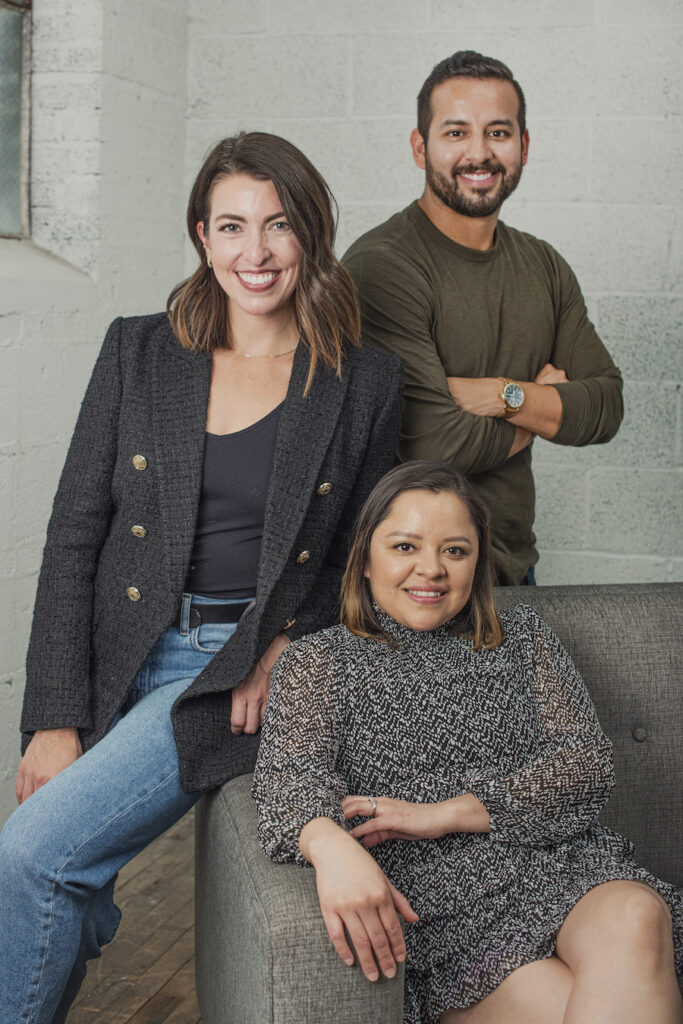For many of us, pets are more than just animals who live in our homes — they’re family. And when it comes to taking care of family, you have to do it the right way.
In this edition of Venture unscripted., podcast host Josh Barker sits down with the co-founders of Vetr Health, a mobile veterinary care service that was developed at the height of the COVID-19 pandemic. Their story of “zero to one” and entrepreneurship during a tumultuous time reveals their spirit of innovation, adaptability, and passion for pets all over the world.
Listen to the podcast video below to learn how pivoting their business strategy led to revolutionizing their venture, or keep scrolling to read the podcast recap.
It Started With a Puppy

The idea for their mobile veterinary care service sparked during COVID-19 when Rachel Berkal and Sadoc Paredes got a Golden Doodle puppy named Penny Lane. But as Penny went to her first vet visit, the couple was shocked to see how expensive pet care was shaping up to be.
As Sadoc and his sister, Ruby Paredes (now one of the co-founders of Vetr), opened up a diagnostic lab a couple of years prior, Rachel and Sadoc had a good idea of what it really cost clinics to provide care. The disconnect between cost and care left them wondering what they could do differently for other pet parents.
The couple then embarked on the entrepreneurial journey and created Vetr Health — the brainchild of several different perspectives including vets, pet parents, and even lab owners.
But Vetr didn’t necessarily start as “Vetr,” and the process of getting to where they are today wasn’t always easy.
Dog Owners Turned Co-Founders
Vetr didn’t happen instantaneously (most startups don’t). For almost a year with their dog, Penny, Sadoc and Rachel were ideating on the concept of Vetr before finally launching anything. But “Vetr” wasn’t their initial idea.
The original idea that Rachel and Sadoc developed started off by offering lab services to pet parents and sending vet techs to their homes to collect samples. Then they would provide the test results and pet parents could eventually take the results to their normal vets and hopefully save some money in the overall pet care process. However, the education of pet parents in understanding what labs would need to be ordered and why was too much.
“I didn’t even know what we needed, what Penny was going to get when we took her to the vet. I just know she needs to go. She needs something and you’re going to take care of her,” Rachel explained.
That educational gap allowed Rachel and Sadoc to shift their thinking. It wasn’t until they connected with their final co-founder, Dr. Brad Boike, that their concept came together. As a veterinarian, Dr. Boike played a pivotal role in defining all of the clinical aspects of the business.
At the time, their concept still wasn’t Vetr as it is today, but Rachel left her corporate position knowing that she and Sadoc would be launching a venture.
The two of them pitched at 5×5 Night — a 5 minute pitch competition with the chance to receive $5,000.
Unfortunately they didn’t win — but that didn’t stop them. The couple went back to the drawing board and reworked their idea. They whiteboard a new name, scrapped portions of the original idea and started over. Within a month, they were able to manage their first major venture pivot.
Rachel says it’s because she had time to really focus, without the distraction of a day job. She could really immerse herself in the work.
At this point, Rachel and Sadoc brought on another co-founder, started building a website, filed for the business license, and moved into their first space.
Making Big Moves
A critical next step in their venture was moving the lab from Denver, Colorado to Grand Rapids, Michigan. It was a long haul that the couple made together with a trailer and their dog, Penny. Once the lab was set, it was a matter of assessing every side of this venture.
“We have the business side, we have the diagnostic and the lab side, but now from a clinical side, what should this look like?” Rachel contemplated. “What do we need to offer?”
It was time to start digging into how they could build the most beneficial package for a pet parent. Rachel and Sadoc wanted this venture to be comprehensive enough to include all of the typical wellness and preventative care, and figure out the right pricing that makes it worth it.
“We did a lot of benchmarking with friends and family and pretty much anyone who would take our survey and tell us about their experience going to the vet, getting vet bills, etc.”
Their goal? To offer an entire package for what it would typically cost someone to take their pet to the vet (if not less) because they would be offering far more services through a telehealth package.
So, how does Vetr work? Listen in to learn more about the annual membership and what it includes.
Peace of Mind
Rachel and Sadoc had finally cracked the code with Vetr. At the end of the day, they found that people just want a resource to care for their pets. And Vetr was the way to provide peace of mind and support outside of traditional pet care services.
It boils down to telehealth, which people have been using for their own healthcare needs for years. The pandemic really kick started a new way of innovation within the telehealth realm and it made a ton of sense to carry that over to pet care as well.
As the current pet telehealth model is still evolving, Vetr goes beyond just giving pet parents an answer by allowing them to take action and get prescriptions mailed straight to their homes. Outfitted with certified veterinarians, the company continues to grow with demand as their need for full-time staff grows as well.
But there’s a problem. The veterinarian culture is racked with burnout. Rachel and Sadoc initially thought they’d be able to continue leveraging vets who wanted to supplement their income. But after taking a step back, under that model they would just be contributing to the problem. Vets are often under-compensated for how highly skilled they are, so Vetr is working to disrupt the narrative.
“We want to bring someone on to our staff full time, at least one full-time vet in each regional market, and pay them 10% to 40% above market rate,” Rachel explained. “It’s a real wake-up call to the rest of the veterinary field that these individuals are highly capable, highly skilled. They’re doctors of veterinary medicine and they should be compensated as such.”
Part of the Vetr offering is to hone in on life-work balance. It’s not uncommon for vets to be overworked.Vets can see upwards of seven patients in an hour. But Rachel and Sadoc are approaching the model completely different from the norm to allow for less stress and fewer visits in general as Vetr vets see up to seven patients a day.
On the pet parent side, Rachel and Sadoc recognize there are pet parents of all types. Some look for convenience. Other pet parents may be anxious about going to the vet. There may be pet parents who lack mobility or transportation. Having someone who could come to your home or complete a telehealth visit is a huge benefit.
“Each one of our members who we’ve gone into their home and surveyed after, 100% of them prefer in-home vet care going forward,” Rachel explained.
What’s Next
The Vetr mission is to inspire a new era of veterinary care, from two sides of the coin. The company’s next steps are to focus on growth within the Michigan market, in both Grand Rapids and Detroit.
Rachel and Sadoc also plan to look into where they can expand service offerings from a wellness standpoint and move on from there. In the time Rachel and Sadoc have worked on Vetr, a lot of lessons have been learned like focusing on the problem you need to solve right now.
“It feels like everything is on fire all the time, so try to be really mindful in the way you’re prioritizing what you’re working on,” Rachel explained. “Put as much energy as possible into the next steps to solving your problem and let the rest of the distractions exist in the background.”
Sadoc felt like the biggest lesson he learned was to always take a moment to step back and reevaluate whether you’re moving in the right direction. Ask yourself if what you’re doing is really affecting the problem you’re trying to solve.
“Focus on the problem and how to really solve it in a meaningful way,” Sadoc continued. “And then I think either things will start to fall into place.”
Continue Learning
Listen to the full story and gain even more advice from innovative entrepreneurs by checking out the podcast video below. For more Venture unscripted. podcasts, click here.



